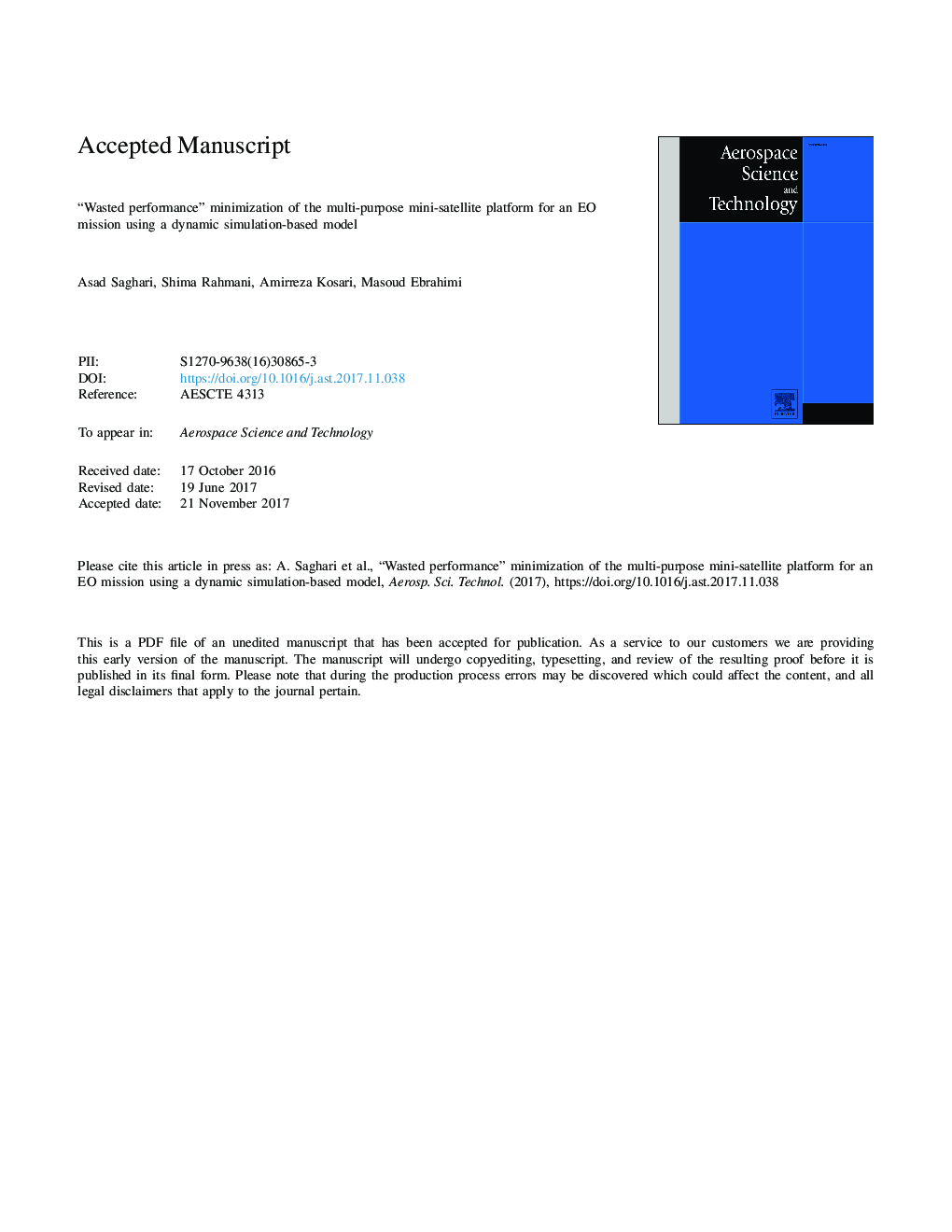| Article ID | Journal | Published Year | Pages | File Type |
|---|---|---|---|---|
| 8058086 | Aerospace Science and Technology | 2018 | 38 Pages |
Abstract
With growing interest in low-cost, high performance and short time-to-flight satellites, the idea of using multi-purpose satellite platforms has drawn many attentions. However, under certain conditions in which the required capability of a mission is slightly more than the capabilities of a specified variant of a multi-purpose platform, it must jump to the next higher capability variant. Correspondingly, lots of unnecessary performance or capability might be imposed. In this paper, the main goal is to minimize the wasted performance in the design of an Earth Observation (EO) satellite based on a multi-purpose platform. To this end, a dynamic simulation-based model has been developed with the capability of simulating the satellite performance characteristics, EO mission requirements and supportable performance by the platform under various circumstances and throughout the satellite lifetime. To minimize the wasted performance we face with an optimization problem containing a complicated non-linear, non-convex and multi-modal design space which is enveloped by constraints of the mission requirements and supportable performance of the platform. A novel criterion as an objective function has been introduced aiming at the incompatibility reduction between the capabilities of a certain multi-purpose platform variant and the EO mission requirements. This objective function considers all the performance variations during the entire mission lifetime rather than solely the worst case. Through this, the mission and orbital characteristics have been determined by which there would be no need to jump to the higher performance variant in order to satisfy the EO mission requirements.
Keywords
Related Topics
Physical Sciences and Engineering
Engineering
Aerospace Engineering
Authors
Asad Saghari, Shima Rahmani, Amirreza Kosari, Masoud Ebrahimi,
